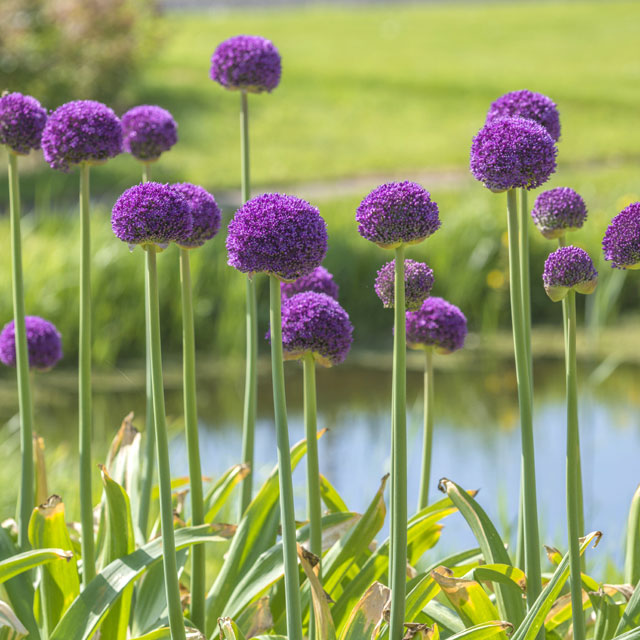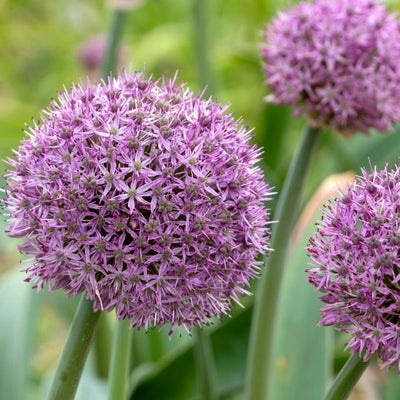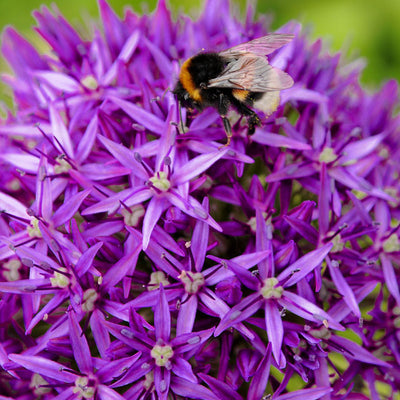Planting Guide
Alliums

How to Plant Allium Bulbs
When to plant:
Alliums are hardy bulbs that thrive outdoors through the winter. For best flowering results, plant allium bulbs in autumn—anytime from September through December. If you can’t get them in the ground right away, keep the bulbs in a cool, dry, well-ventilated spot. Avoid storing them past early December, as they won’t last into the following year.
Where to plant:
Alliums grow beautifully in garden borders, raised beds, and patio containers. They love free-draining soil, so if your garden has heavy clay, mix in plenty of compost along with some grit or sand to improve drainage before planting. In pots, choose a peat-free multipurpose compost and place the container in full sun or very light shade.
How deep to plant alliums:
Bulb size determines planting depth. As a rule of thumb, plant allium bulbs about 2–3 times as deep as the bulb is tall. Smaller bulbs may only need to be tucked a few centimeters beneath the soil surface, while large globe alliums should go deeper. Always plant with the pointed tip facing upwards—some bulbs may look a little flat on one side, and that’s completely normal.
Spacing your bulbs:
Smaller allium bulbs can be grouped together in wide, shallow planting holes with around 5 cm spacing. Large bulbs, on the other hand, need more room to grow—space them at least twice the width of the bulb apart. This ensures they have space to develop strong stems and large flower heads.
After planting:
Once your bulbs are covered with soil or compost, gently firm down and water them if the ground is dry. After that, alliums are very low maintenance. They won’t need extra watering through winter unless your climate is unusually mild and dry. In spring, provide water only during prolonged dry spells. With the right care, you’ll enjoy tall, striking blooms that return year after year.
Ongoing care:
Alliums are some of the easiest bulbs to grow, being largely pest- and disease-free. They are naturally resistant to deer and rodents, and when planted among other spring bulbs, they can even help protect your display. The main nuisance you might encounter is slugs or snails, which may nibble young shoots. To prevent damage, use slug bait, organic pellets, or set up beer traps to keep these pests under control.
















